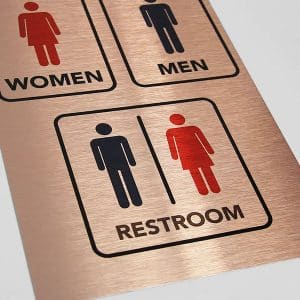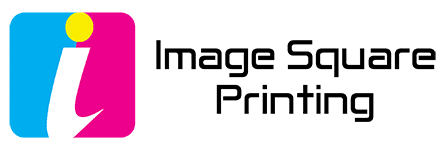E-Panel is an Aluminum Composite Material, ACM, also referred to as Die-bond
E-PANEL is an aluminum composite panel, Aka Die-Bond, used for interior and exterior display and signage applications. It is suitable for mounting graphics as well as digital or screen printing, and can be saw cut, routed, or punched; however, it is recommended for flat panel applications only. It can be digitally printed on both sides and meets Class A fire rating based on the ASTM E-84 standards.
Here’s a breakdown of Dibond’s structure:
- Two thin aluminum sheets: These sheets are comprised of two pre-painted sheets of .008” aluminum, (Die-Bond 0.012”) with a solid polyethylene core. 3mm overall thicknesses. Typically pre-treated for better adhesion.
- Polyethylene core: This lightweight core provides rigidity and helps maintain the panel’s flatness.
Key benefits of Dibond:
- Durability: Dibond is resistant to weather, corrosion, and chemicals, making it suitable for various indoor and outdoor applications.
- Lightweight: Compared to solid aluminum sheets of the same size, Dibond is significantly lighter, making it easier to handle and transport.
- Rigidity: Despite being lightweight, Dibond offers good rigidity and dimensional stability.
- Versatility: Dibond can be cut, routed, drilled, and shaped into various forms, making it a versatile material for different applications.


Advantages with E-PANEL™
- Suitable for digital & screen printing
- Can be printed on both sides
- Suitable for mounting graphics
- Very rigid with good flatness
- Provides excellent durability in outdoor applications
- Can be saw cut, routed or punched
- Recommended for flat panel applications
- UL Recognized
- Class A fire rating (ASTM E-84) in gauges 4mm and less
Dibond Aluminum: A Versatile Material
Dibond aluminum, also known as Aluminum Composite Material (ACM), is a popular choice for a variety of applications due to its strength, durability, and versatility.
Here are some of its common uses:
- Outdoor signage: Billboards, pylon signs, and building facades
- Indoor signage: Point-of-sale displays, trade show exhibits, and wayfinding signs 1. How to Use Dibond Signs for Business Branding Signage – Brooklyn Signs
- Digital signage: Backlit displays and video walls
Architectural Applications
- Cladding: Facades, soffits, and canopies
- Interior design: Wall panels, partitions, and ceilings
- Custom fabrication: Doors, windows, and architectural details
Other Uses
- Vehicle graphics: Truck wraps, fleet graphics, and bus advertising
- Product displays: Retail displays and product packaging
- Fine art: Printing substrates and gallery displays
- Industrial applications: Machine guards, enclosures, and panels
- Lightweight: Easier to handle and install compared to solid aluminum.
- Rigid: Provides excellent structural support.
- Weather-resistant: Suitable for both indoor and outdoor applications.
- Versatile: Can be cut, drilled, routed, and formed to create custom shapes.
- Aesthetically pleasing: Available in a variety of finishes and colors.
If you’re considering using Dibond aluminum for a specific project, consult with a our professional staff to ensure it’s the best choice for your needs.


